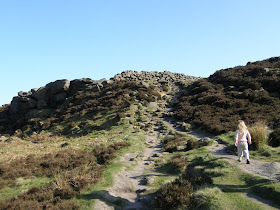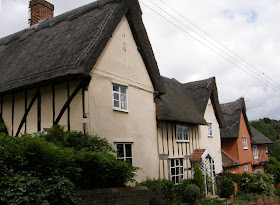
Oh what can ail thee, knight-at-arms,
Alone and palely loitering?
The sedge has withered from the lake,
And no birds sing.
Oh what can ail thee, knight-at-arms,
So haggard and so woe-begone?
The squirrel's granary is full,
And the harvest's done.
I see a lily on thy brow,
With anguish moist and fever-dew,
And on thy cheeks a fading rose
Fast withereth too.
I met a lady in the meads,
Full beautiful - a faery's child,
Her hair was long, her foot was light,
And her eyes were wild.

I made a garland for her head,
And bracelets too, and fragrant zone;
She looked at me as she did love,
And made sweet moan.
I set her on my pacing steed,
And nothing else saw all day long,
For sidelong would she bend, and sing
A faery's song.
She found me roots of relish sweet,
And honey wild, and manna-dew,
And sure in language strange she said -
'I love thee true'.
She took me to her elfin grot,
And there she wept and sighed full sore,
And there I shut her wild wild eyes
With kisses four.

And there she lulled me asleep
And there I dreamed - Ah! woe betide! -
The latest dream I ever dreamt
On the cold hill side.
I saw pale kings and princes too,
Pale warriors, death-pale were they all;
They cried - 'La Belle Dame sans Merci
Hath thee in thrall!'
I saw their starved lips in the gloam,
With horrid warning gaped wide,
And I awoke and found me here,
On the cold hill's side.
And this is why I sojourn here
Alone and palely loitering,
Though the sedge is withered from the lake,
And no birds sing.

La Belle Dame Sans Merci ( the beautiful woman without pity) is one of the sidhe, a beautiful faery woman who lures men to the Otherworld of faeryland. If a man kisses one of the sidhe then he is doomed to wander in the madness of love and never return to a normal life in the world of mortals. The knight in the poem is only one of many unsuspecting men who have fallen for her wiles and now languish on the hillside as pale shades of their former selves.
There are two versions of Keats' poem and the one I've used is the original written in 1819.
The illustrations are by Sir Frank Dicksee, Arthur Hughes, John William Waterhouse and Frank Cadogan Cowper. All are Pre-Raphaelite artists who were often inspired by medieval themes in poetry. Of the four paintings my favourite is the last one by Frank Cadogan Cowper and surprisingly, considering how much I love the work of John William Waterhouse, his is the one I like least. The original 'diversion' of the title is here for anyone who is interested.













































